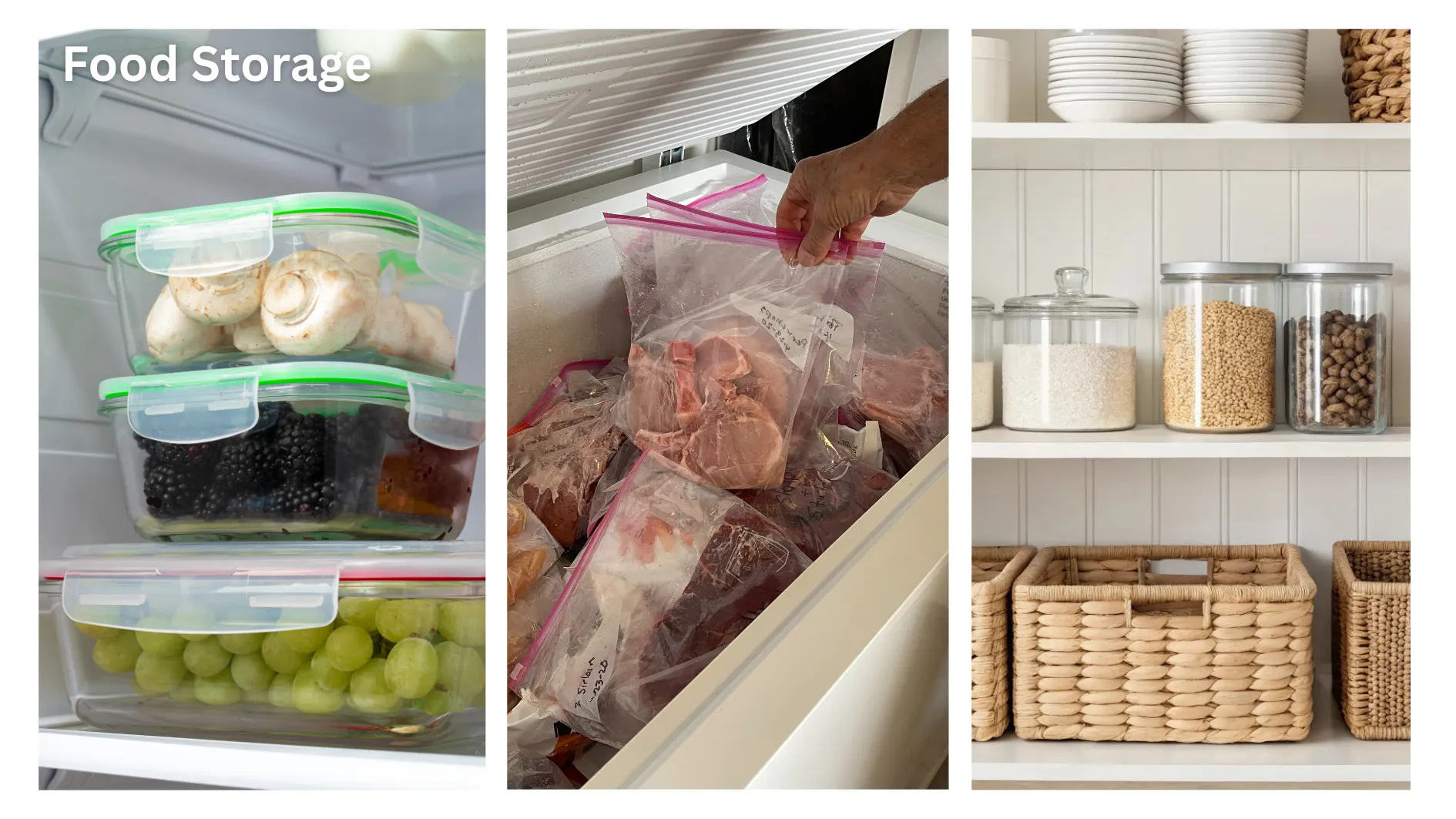Keeping your food fresher for longer isn’t just about cutting down on waste, it also helps you save money, maintain better flavor, and enjoy more nutrient-rich meals. Whether you’re a dedicated meal prepper, a weekend farmers’ market regular, or simply looking to stretch your grocery haul, learning how to store food the right way is one of the most valuable kitchen skills you can have.
In this guide, you’ll find simple, practical tips for properly storing fresh produce, dairy, meat, leftovers, and pantry staples, all designed to help you keep your food safe, flavorful, and ready when you need it.
New to the kitchen or just brushing up on the basics? Head over to our Cooking 101: Essential Skills for a refresher on smart food handling and storage practices
Why Proper Food Storage Matters
Storing food correctly is one of the most overlooked kitchen habits, but it plays a huge role in the quality, safety, and cost of your meals. Whether you’re working with fresh produce, leftovers, or pantry staples, proper storage ensures that everything stays fresh and flavorful for as long as possible. Here’s why it really matters:
1. Prevents Spoilage
Ever reached into your fridge for lettuce only to find a slimy mess? Or opened a container of berries to discover fuzzy mold? Spoilage is more than inconvenient, it’s wasteful. Proper storage helps extend the shelf life of produce, dairy, meat, and leftovers, keeping them edible and enjoyable for days (or even weeks) longer.
2. Saves You Money
Food that spoils before you can use it is money down the drain. By learning to store foods in the right conditions, from dry grains in airtight jars to herbs wrapped in paper towels, you can significantly cut back on waste and make the most of your grocery budget. Small habits like freezing leftovers or rotating pantry items save both cash and time.
3. Preserves Nutrients
The fresher your food, the more nutritious it is. As fruits and vegetables age, they gradually lose key vitamins and minerals. For example, leafy greens lose vitamin C quickly when exposed to air and moisture. Proper storage slows this process, helping you get the most nutrients out of every bite.
4. Keeps Your Fridge Organized
When your food is stored properly, your kitchen runs more smoothly. Airtight containers, labeled leftovers, and zoned storage (like keeping raw meats on the bottom shelf) reduce clutter and make it easier to see what you have, and use it efficiently. This means quicker meal prep and less stress at dinnertime.
5. Reduces Risk of Foodborne Illness
Storing food at the right temperature, especially perishable items like dairy, meat, and eggs, is critical for preventing bacteria like salmonella and listeria from multiplying. Following basic food safety guidelines, such as refrigerating leftovers within two hours and thawing meats in the fridge, keeps you and your family safe.
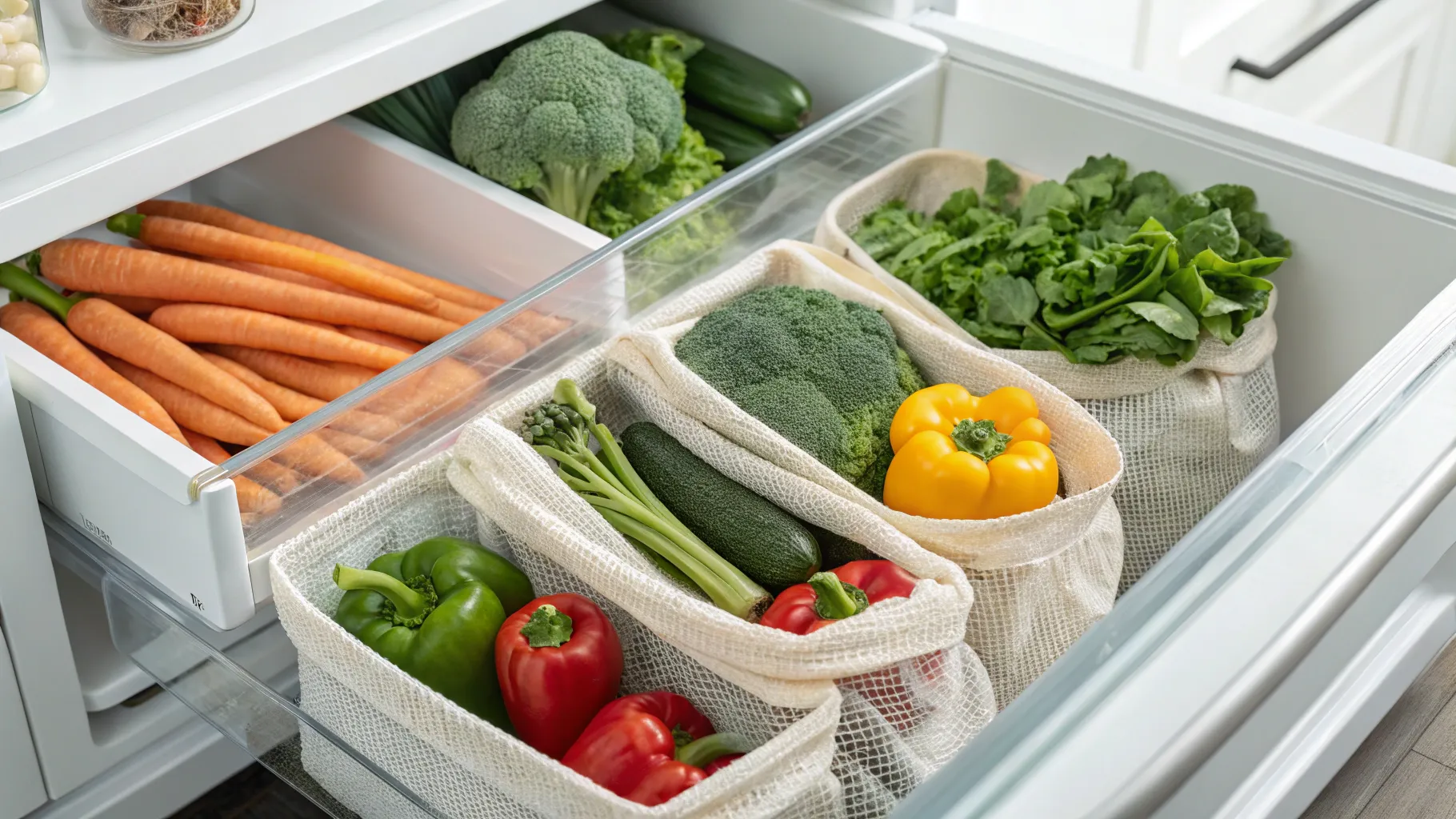
General Storage Rules to Remember
Whether you’re storing fresh produce, leftovers, or pantry staples, following a few key rules can maximize freshness, keep your kitchen organized, and prevent food waste. These foundational practices apply to every kitchen and every cook, beginner or pro.
1. Cool It Quickly
Perishable foods like cooked meats, soups, or dairy-based dishes should never sit at room temperature for more than 2 hours. After that, bacteria can begin to grow rapidly in the “danger zone” (between 40°F and 140°F / 4°C and 60°C).
- Store food in shallow containers so it cools faster in the fridge.
- Never place hot food directly into the fridge, let it cool slightly first, uncovered, before sealing.
💡 Pro tip: Use an ice bath to quickly cool soups or stews before refrigerating.
2. Label and Date Leftovers
It’s easy to forget when you made that pot of chili or baked that lasagna, especially if your fridge is packed. Labeling and dating containers helps you keep track of what’s still good to eat and what should be tossed.
- Use masking tape and a permanent marker or write directly on containers with dry-erase pens.
- Follow the 3–4 day rule for most cooked leftovers.
📝Note: This habit also helps with meal planning and reduces food waste.
3. Use Airtight Containers
Air is the enemy of freshness. Using airtight glass or BPA-free plastic containers prevents moisture loss in refrigerated foods and keeps pantry items from absorbing odors or going stale.
- Store chopped produce in lidded containers with a paper towel to absorb moisture.
- Use glass jars or sealable canisters for grains, nuts, and baking ingredients.
💡 Pro tip: Clear containers make it easy to see what you have, no more forgotten leftovers in the back of the fridge!
4. Practice FIFO (First In, First Out)
One of the best habits for reducing waste is using what you already have, before it goes bad. FIFO (First In, First Out) is a simple system used in professional kitchens to ensure that older items get used up first.
- When unloading groceries, rotate older items to the front and place new ones in the back.
- Check use-by dates and prioritize what needs to be eaten soon.
💡 Pro tip: Create a “Use Me First” bin in your fridge or pantry for items close to expiring.
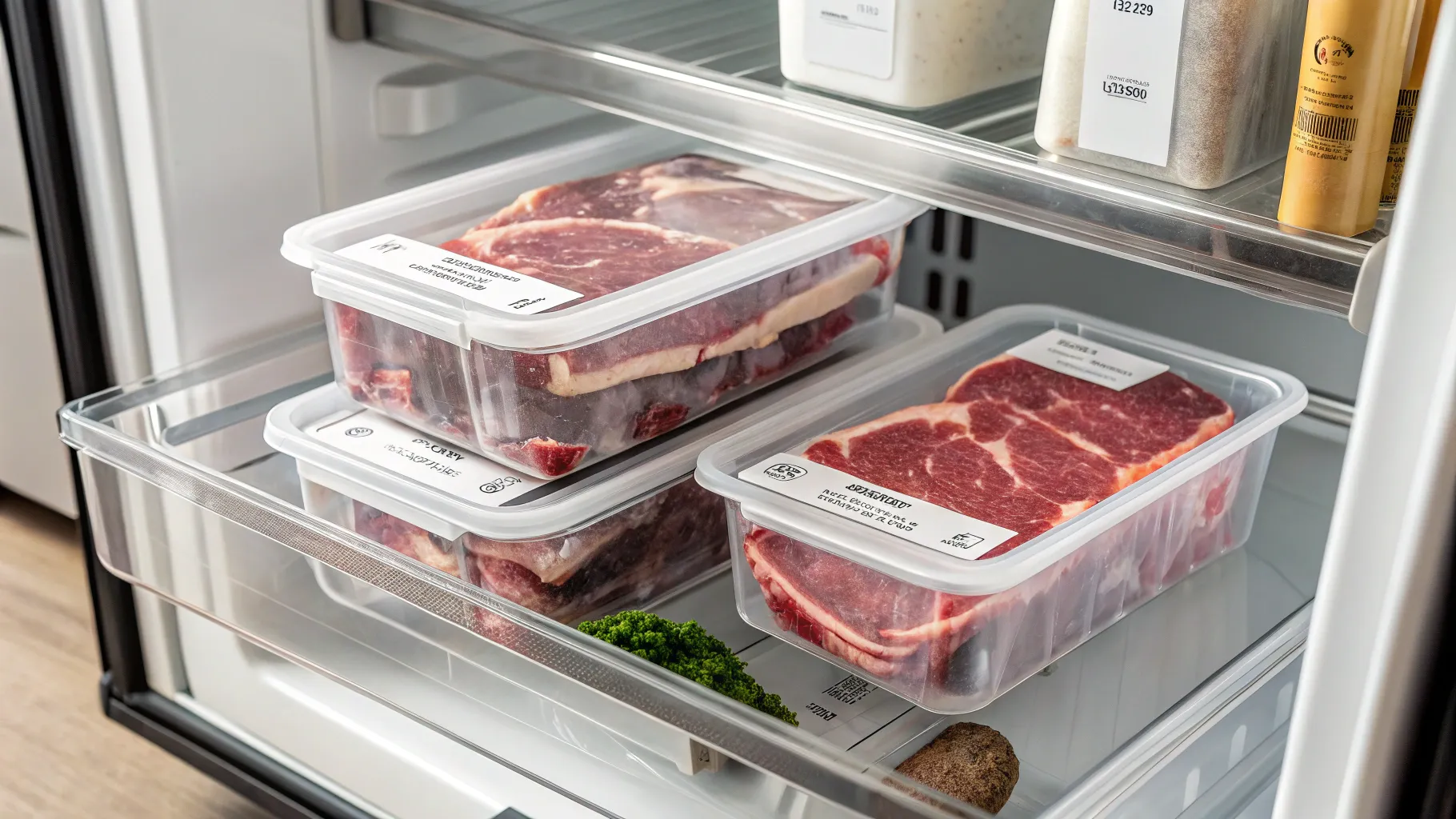
Storing Fresh Produce
In the Fridge
Store these vegetables in your crisper drawer for best freshness:
- Carrots (in a sealed bag or container)
- Broccoli and cauliflower (in a vented bag)
- Leafy greens (wrapped in paper towels in an airtight container)
💡 Pro tip: Don’t wash produce before storing it, moisture encourages mold. Wash right before use.
On the Counter
Some fruits are best kept at room temperature:
- Apples (if eating soon)
- Bananas
- Citrus (like lemons and limes)
- Tomatoes (never refrigerate, it dulls flavor)
Ethylene Alert: Keep ethylene-producing fruits (like bananas, apples, and avocados) away from ethylene-sensitive produce (like leafy greens and berries) to prevent premature ripening or spoilage.
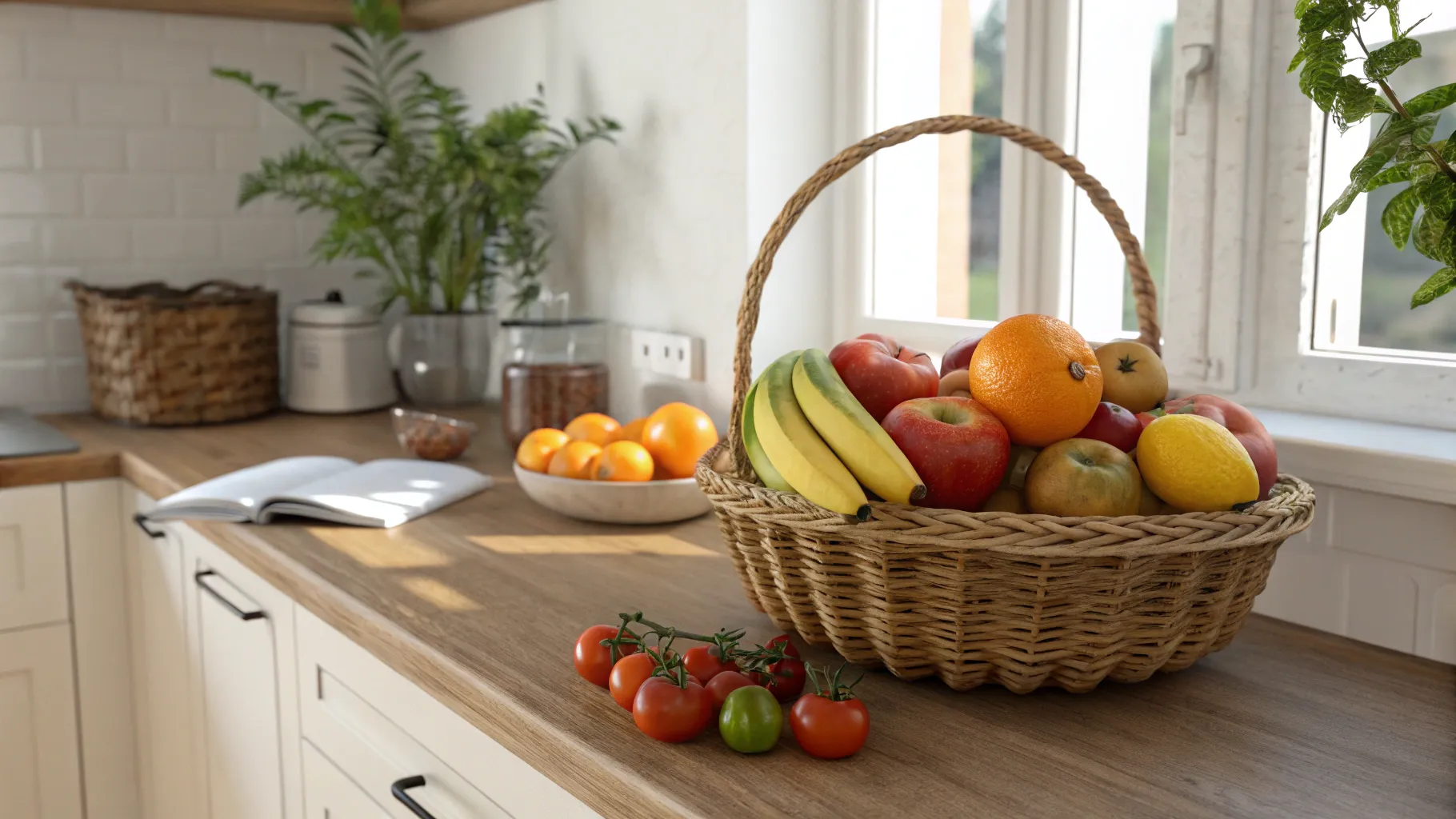
How to Store Meat, Poultry & Fish
In the Fridge:
- Store raw meat on the bottom shelf in a leak-proof container to prevent contamination.
- Use or freeze within: 1–2 days for ground meats or seafood and 3–5 days for whole cuts of beef, pork, or poultry.
In the Freezer:
- Wrap meat tightly in freezer paper or vacuum-seal.
- Label with the date and type of meat.
- For best quality, use within: 3 months for ground meats and 6–12 months for larger cuts and whole poultry.
💡 Pro tip: Thaw meat in the fridge, not on the counter, to stay within safe temperature zones.
How to Store Dairy and Eggs
1. Milk & Yogurt
- Keep milk on a shelf, not the door, where the temperature is more stable.
- Always reseal and refrigerate immediately after use.
2. Cheese
- Wrap in wax paper, then place in a loosely sealed plastic bag or airtight container.
- Hard cheeses (cheddar, parmesan) last longer than soft cheeses (brie, feta).
3. Eggs
- Store in the original carton on a middle shelf, not the fridge door.
- Eggs can last 3–5 weeks in the fridge.
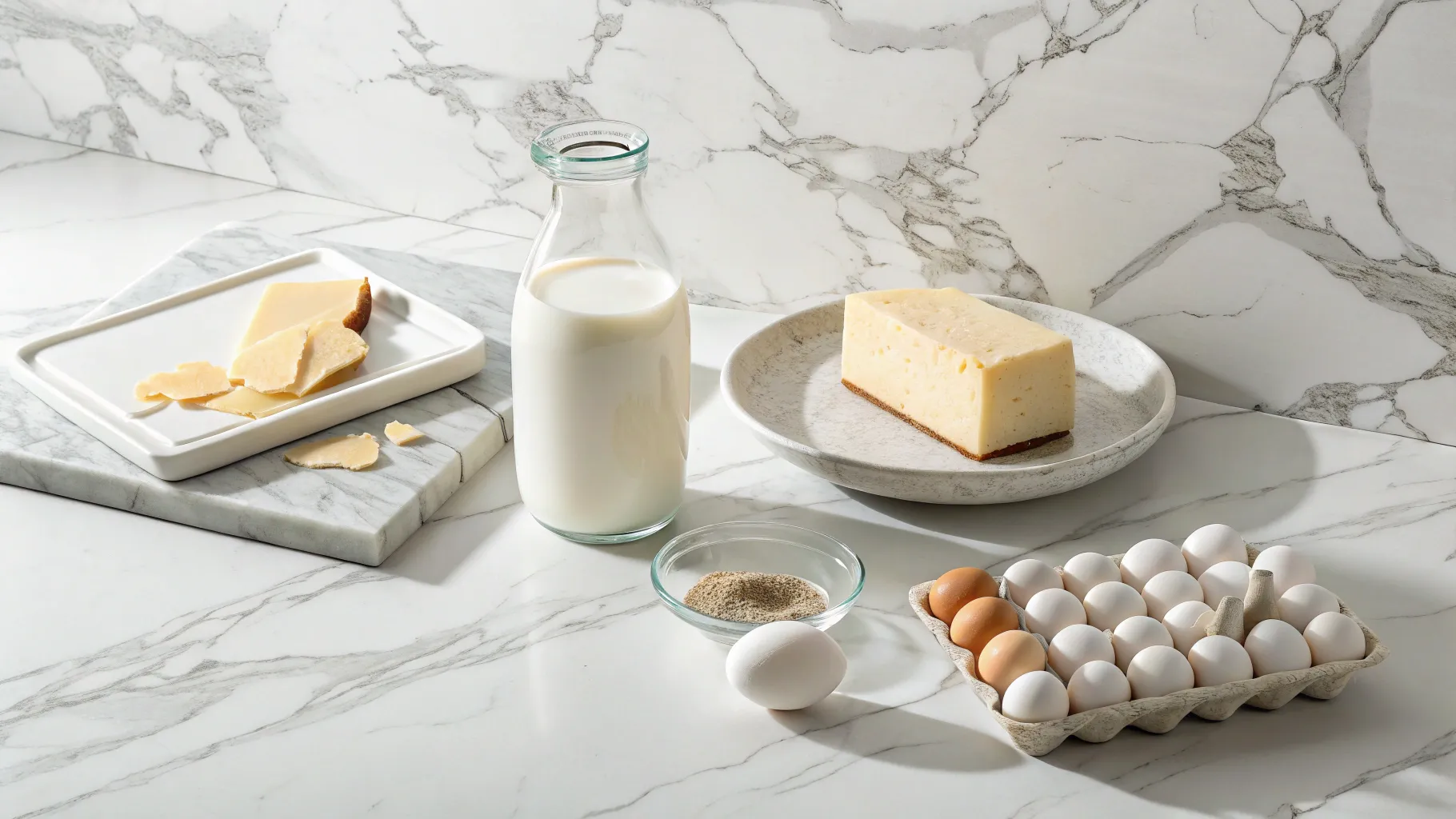
Leftovers and Cooked Food
- Cool to room temperature within 2 hours, then refrigerate.
- Store in shallow containers for even cooling.
- Use leftovers within 3–4 days or freeze for up to 3 months.
- Label and date containers to avoid mystery meals.
💡 Pro tip: Reheat leftovers to an internal temperature of 165°F (74°C) for food safety.
Pantry Staples: Dry Goods Done Right
A well-organized pantry is the heart of a functional kitchen. Dry goods like grains, pasta, flour, beans, and baking essentials may seem shelf-stable, but how you store them can affect their freshness, flavor, and shelf life. With the right habits, your pantry can help you cook faster, smarter, and waste less.
1. Store in a Cool, Dark Place
Light and heat can degrade the quality of dry goods over time, leading to loss of flavor or even spoilage. For best results:
- Store grains, flour, sugar, and pasta in airtight containers to protect against moisture and pantry pests like weevils or ants.
- Choose glass jars, ceramic canisters, or BPA-free plastic bins with secure lids to keep your staples clean, dry, and fresh.
- Keep items off the floor and away from the oven or windows where temperature fluctuates.
💡 Pro tip: Use clear containers with labels to quickly identify ingredients and monitor levels for restocking.
2. Check Dates and Rotate Stock
While dry goods last a long time, they’re not immune to expiration. Whole grains, nuts, and flours can go rancid due to natural oils. Spices also lose potency over time.
- Check best-by dates regularly, and rotate older items to the front of your shelves.
- Create a “use-me-first” basket or bin for anything close to expiring, this simple trick can drastically reduce pantry waste.
- Keep a list of what you have to avoid overbuying.
💡 Pro tip: Take inventory every few months to stay on top of what you’re actually using.
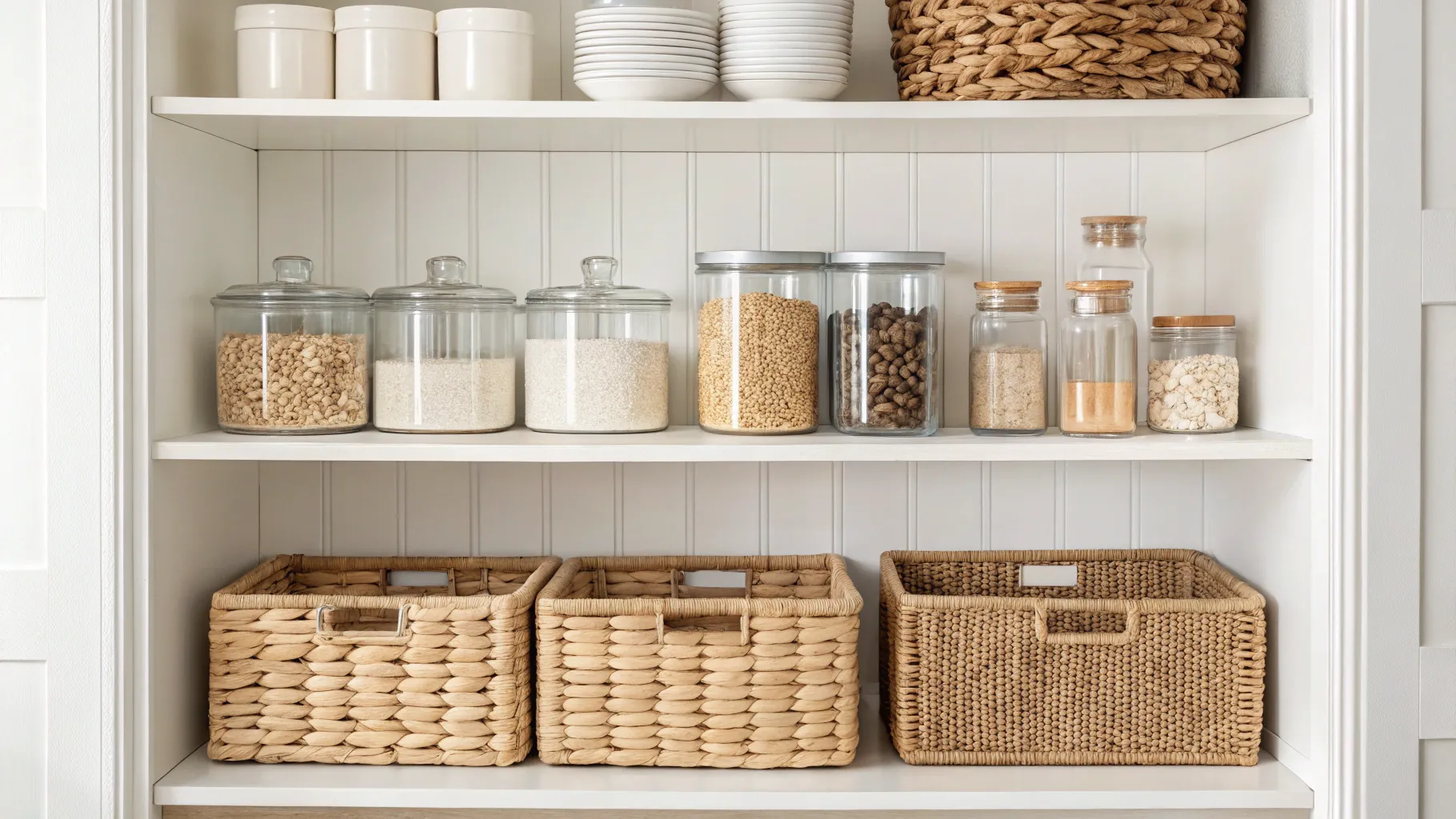
Bread and Baked Goods: Storing the Staples
Bread may be one of the most consumed staples in the home, but it’s also one of the most commonly wasted. The key to making it last is understanding how, and where, to store it.
1. Store at Room Temperature:
Keep sliced bread, rolls, or baguettes in a sealed bag, breadbox, or cloth pouch in a cool, dry place. Room temperature slows staleness better than the refrigerator.
- Most breads stay fresh for 3–5 days on the counter.
- Use a breadbox or breathable container to maintain a balance of moisture and air circulation.
2. Freeze for Longer Storage:
If you don’t plan to eat a loaf within a few days, freeze it. Bread freezes exceptionally well.
- Slice before freezing so you can toast pieces as needed.
- Use freezer-safe bags, press out excess air, and label with the date.
- Frozen bread lasts 2–3 months without noticeable quality loss.
3. Skip the Fridge:
It may seem counterintuitive, but the refrigerator speeds up bread staling through a process called retrogradation. Unless it’s extremely hot or humid in your kitchen, stick to countertop or freezer storage.
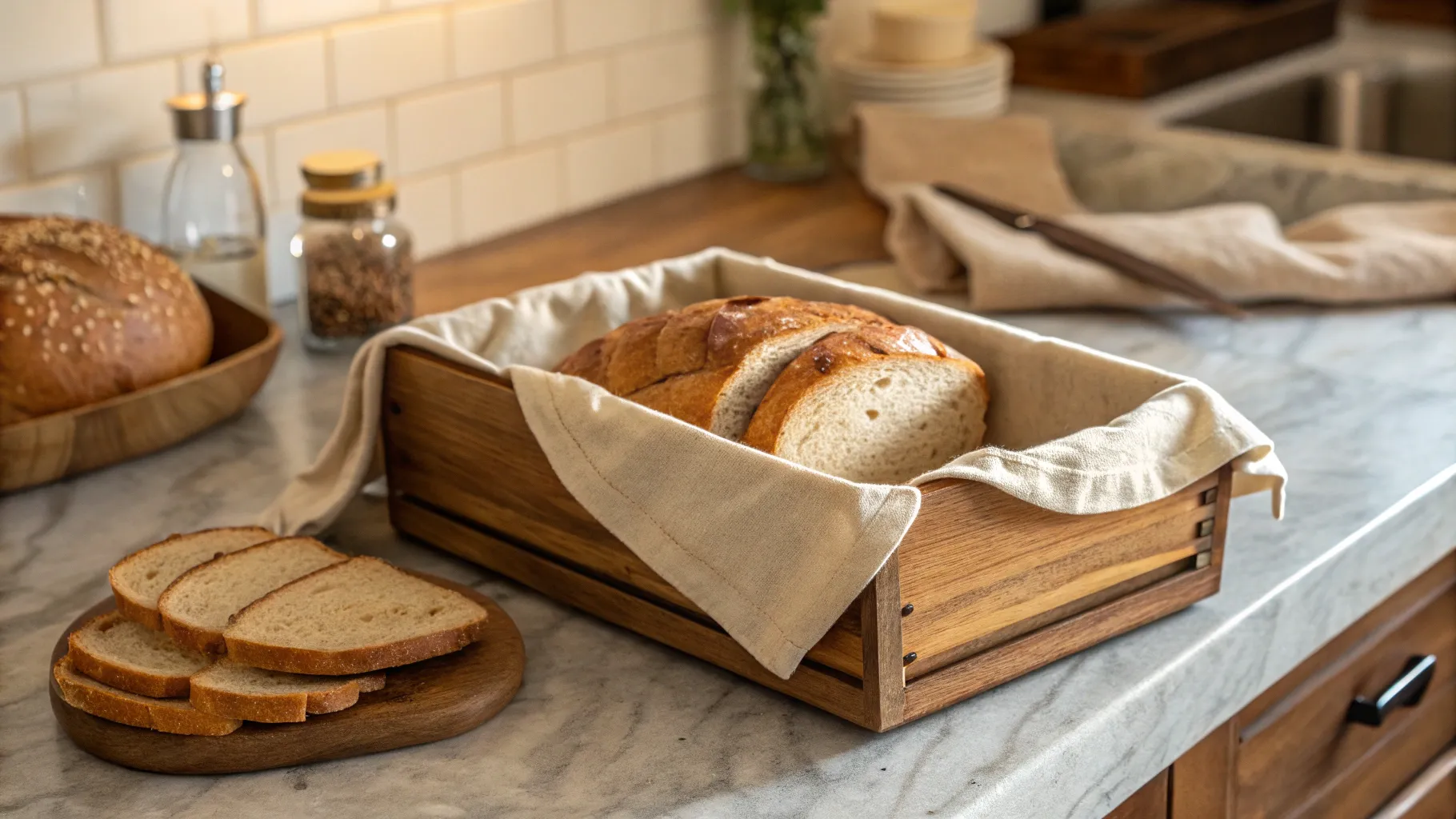
Garlic, Onions & Potatoes
- Store in a cool, dry, well-ventilated place.
- Keep away from each other, moisture released from potatoes can cause onions to sprout or rot.
- Do not refrigerate potatoes, it changes the starches and can alter flavor.
Best Practices for Freezing
Freezing can extend the life of many foods, but technique matters:
- Use freezer-safe bags or containers to prevent freezer burn.
- Remove as much air as possible before sealing.
- Label with the date and contents.
- Freeze in portions so you can thaw only what you need.
Quick-Reference: Where to Store Common Foods
| Food Item | Best Storage Method | Shelf Life |
|---|---|---|
| Leafy greens | Fridge, paper towel wrap | 5–7 days |
| Tomatoes | Room temp, stem side down | 3–5 days |
| Chicken breasts | Bottom fridge shelf | 1–2 days |
| Eggs | Middle fridge shelf | 3–5 weeks |
| Rice (cooked) | Airtight container, fridge | 4–6 days |
| Cheese (hard) | Wrapped in paper, fridge | 2–4 weeks |
| Cooked pasta | Fridge, sealed container | 3–5 days |
Final Thoughts: Make Freshness a Habit
Proper food storage doesn’t have to be complicated. With just a few simple habits, like labeling containers, storing items in the right zone, and understanding what lasts where, you can make your groceries last longer, cut back on food waste, and make your meals more delicious every time.
Mastering storage is a small but powerful step in becoming a smarter, more confident home cook.

